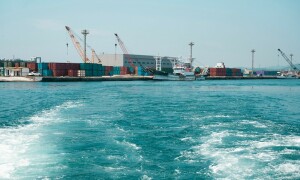In its 2013-14 annual report, National Electric Power Regulatory Authority (Nepra) has highlighted major bottlenecks in the performance of power sector ranging from circular debt to an expensive energy mix to inefficient-run power plants to high transmission and distribution losses to poor management and oversight.
The circular debt was largely retired two days prior to the start of fiscal year 2013-14 by the then newly-appointed Finance Minister Ishaq Dar and for Nepra report to note that the debt remains a source of serious concern is a reflection of how quickly it has resurfaced attributable to the government's failure to implement appropriate measures to ensure it did not resurface. The recent International Monetary Fund staff review of the fourth and fifth tranches under the Extended Fund Facility notes that circular debt is 2 percent of Gross Domestic Product. The latest data uploaded on the State Bank of Pakistan website gives GDP of 25,402 billion rupees while previous data gives a total of 22,489 billion rupees. The circular debt can be calculated at 508 billion rupees based on the latest data and 449 billion rupees given previous data - figures that are comparable to the retired circular debt a year and a half ago. Reports indicate that no one is willing to accept the responsibility: the Finance Minister is reportedly angered at frequent demands to extend a package to resolve the immediate liquidity crisis that disables the Pakistan State Oil from opening letters of credit, the Water and Power Minister accuses the energy committee headed by the Finance Minister with a major input from Chief Minister Punjab of gross interference in his ministry that disables him from taking decisions while the Minister of State for Water and Power's accusatory statements against provincial governments/departments for not clearing their bills has generated a considerable conflict. In short, the blame-game is as circular as the circular debt itself. The Minister for Petroleum and Natural Resources is struggling with increasing shortages and his demand management plan is leaving many productive sectors as well as the upcountry household sector severely dissatisfied. There is a solution to this circular blame-game which is contained in the PML-N manifesto: to merge all energy ministries into one, empower the relevant minister and in case of non-performance to change him as committed by the Prime Minister during the first few months of his assuming power.
There is no doubt that the energy mix requires a revisit and the present government is currently engaged in projects with reliance on cheap sources of indigenous fuel: hydel, wind, solar and coal, that would, when completed, change the energy mix. However, at the same time, it is known that Pakistan's existing government-run Independent Power Producers (IPPs) are extremely inefficient, which simply raise the costs, and, in addition, the transmission system in place does not have the capacity to withstand more than 15000MW as per former Secretary Water and Power. Unfortunately, however, while the present government is evidently engaged in construction of indigenous fuel-based projects yet there appears to be little attention to improving the transmission system. In addition, the third party audit of rental power projects concluded that our existing capacity, if fully realised, would lead to no more than an hour or two of loadshedding at best. Thus it is imperative that the government focuses on improving management of the sector to ensure capacity utilisation.
The Nepra report has correctly warned that strict measures with a stringent legal framework to ensure implementation are critical to improving the performance of the sector - measures that cannot be carried out without provincial governments and law enforcement agencies. In addition, the regulator calls for both supply and demand side management and unfortunately while members of the country's executive have periodically pointed out the need to manage demand as much as to manage supply yet no concrete measure or campaign has been launched. This requires an urgent change and a more proactive approach is necessary to resolve the continuing energy crisis.
BR100
12,702
Increased By
113.8 (0.9%)
BR30
38,258
Increased By
378.2 (1%)
KSE100
118,383
Increased By
1067.8 (0.91%)
KSE30
36,395
Increased By
278.8 (0.77%)






















Comments
Comments are closed.